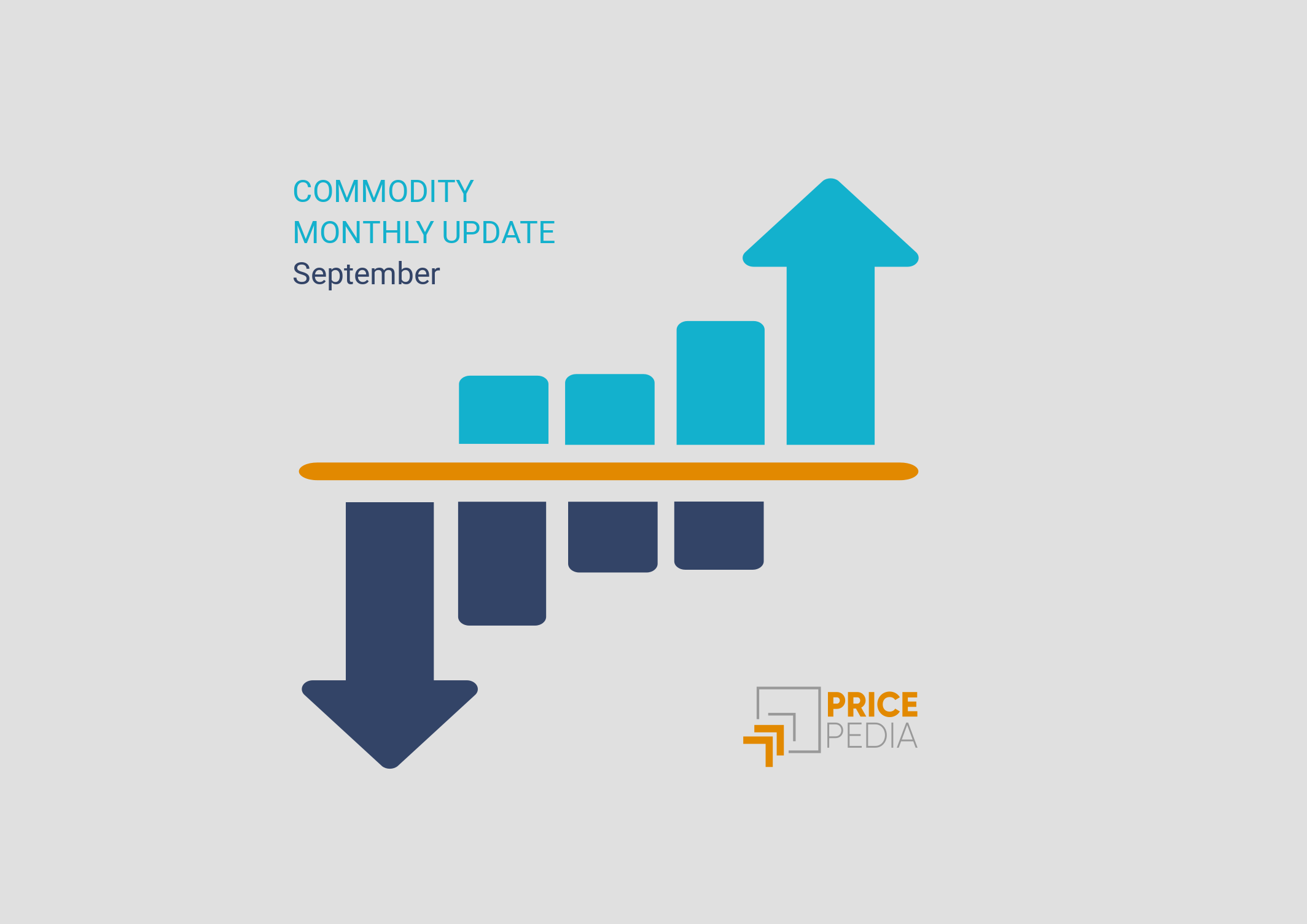Fifth month of stability in the physical prices of industrial commodities
The hypothesis of the existence of a floor for the aggregate prices of industrial commodities is increasingly robust
Published by Pasquale Marzano. .
EU Customs Global Economic TrendsThe update of the dynamics of commodity prices of November 2023 is characterized by a significant reduction (-8%) in the prices of Energy products in euros, in the face of stability in commodity prices of Food and Industrial goods.
Energy commodities
The physical prices of energy commodities are reflecting the dynamics of the financial price of oil. The latter, after having exceeded 95 dollars a barrel at the end of September, under the pressure of OPEC+ decisions to reduce production, began on a downward path which led it to stabilize at around 80 dollars /barrel during the month of November. This decline is linked to the emergence of a slowdown in global industry which is becoming increasingly stronger.
Not even the geopolitical tensions created by Hamas' serious attack on Israel and Israel's subsequent violent reaction led to its significant recovery. All the main forecasters expect a continuation of this downward trend in the coming quarters, with risks both on the upside, in the face of a worsening of the ongoing crisis between Israel and the Arab world, but also on the downside, if the unity of OPEC+ should it fail.
Stability of industrial commodity prices
For five months now, the PricePedia price index in euros of industrial commodities has been stable at a value of 89. This stability, in the face of the continuation of the reduction in the levels of activity of global industry , and therefore of the demand for industrial commodities, suggests the possibility that, in the aggregate, a price floor that cannot easily be overcome has been reached, barring plausible but unlikely negative events. As a first test of the price floor hypothesis, a comparison of the current price level with the average price level of 2019, considered as a reasonable equilibrium point before the pandemic, may be useful.
The following table shows the change compared to 2019 in the main aggregates of commodity prices and inflation in Europe.
| Indicator | Change (%) Nov-2023 / average Year 2019 |
|---|---|
| Energy Commodities | +40.2 |
| Food Commodities | +46.3 |
| Industrial Commodities | +26.9 |
| Consumer prices Euro Area | +18.2 |
These dynamics seem perfectly coherent with each other, suggesting that the current level of the aggregate commodity price index can be considered to be on a level playing field, with the possibility of remaining at these levels until the expected recovery in commodity levels takes hold. activities of the global industry.
However, within industrial commodities there are very different situations, not so much in the short-term dynamics, but in the relationship with the average price levels of 2019.
As regards the short-term dynamics, the following graph shows the monthly rate of change in November of the various sub-aggregates that make up the industrial commodities.
Chart 1: November 2023, % changes in euros compared to October 2023
Source: PricePedia
As can be seen from the chart 1, in the last month the movement of the sub-aggregates, which represent the product categories present in PricePedia, has been almost nil: the variations recorded never exceed, in absolute value, 1%.
The price situation in November 2023 is more varied when compared with the average prices of 2019. The following graph shows the % change in price levels in these two periods.
Chart 2: Changes (%) November 2023-average Year 2019
Source: PricePedia
As can be seen from the chart 2, the current levels of industrial commodity prices are structurally higher than those recorded on average in 2019.
This changes depending on the product category considered: in fact, it ranges from the slight increase in Textile Fibers of "only" +7% (however lower than the overall inflation in the same period), to +39% in Inorganic Chemicals.
1. The PricePedia industrial price index results from the aggregation of the indices relating to the following product categories: Ferrous, Non-Ferrous, Wood and Paper, Chemicals: Specialties, Organic Chemicals, Inorganic Chemicals, Plastics and Elastomers and Textile Fibres.


